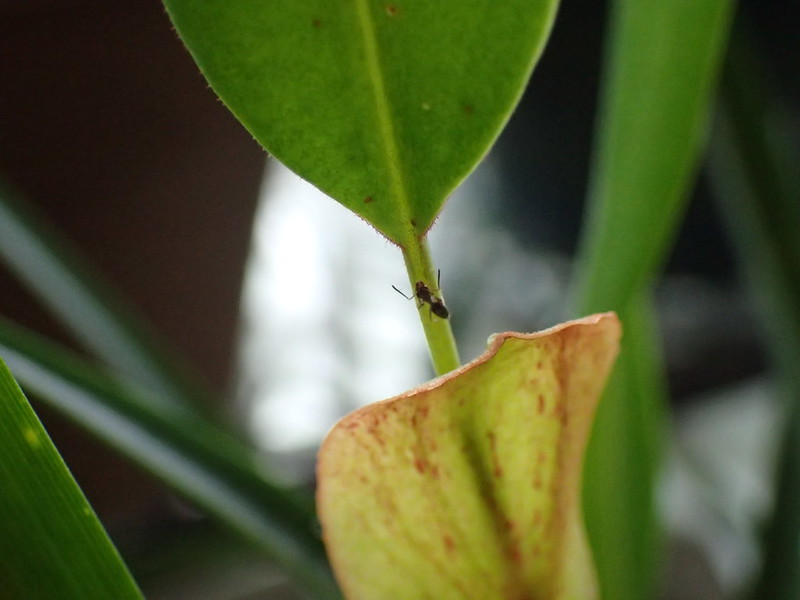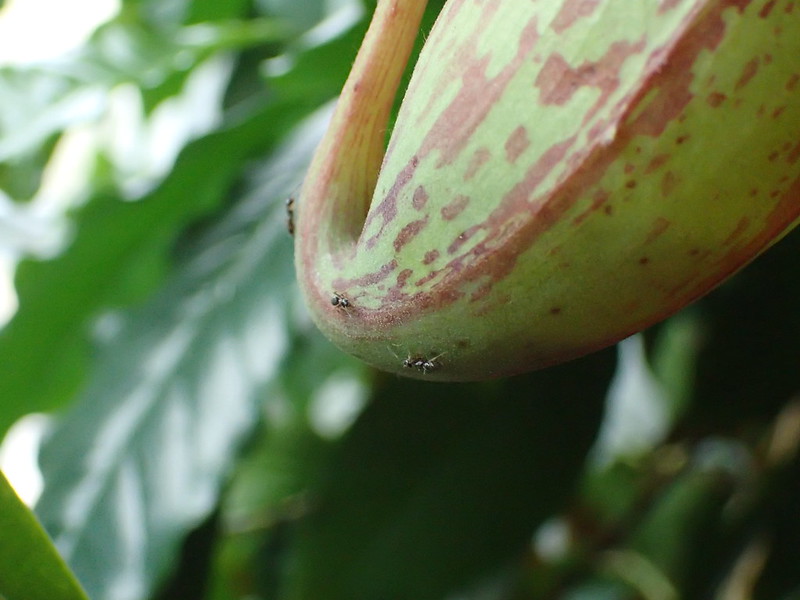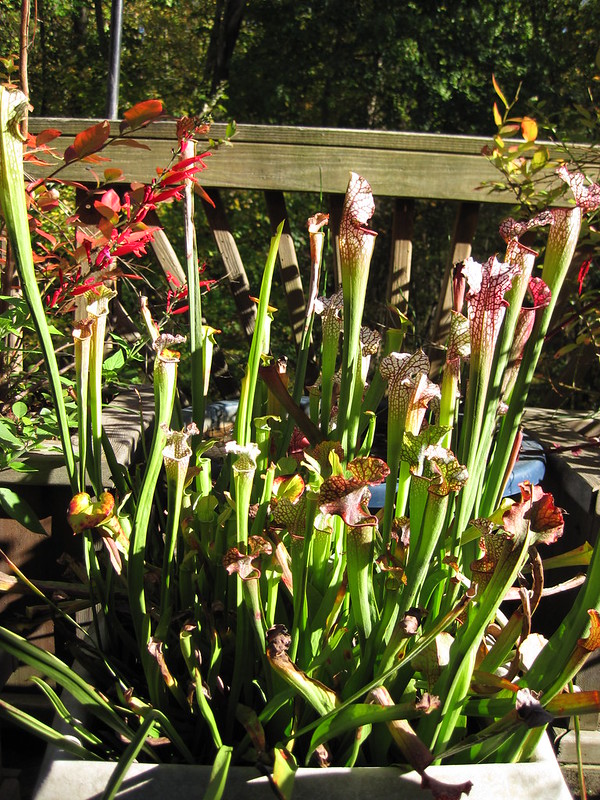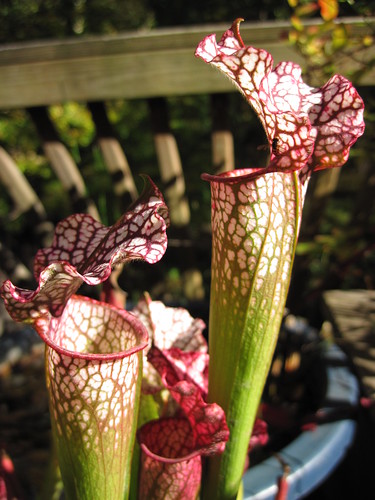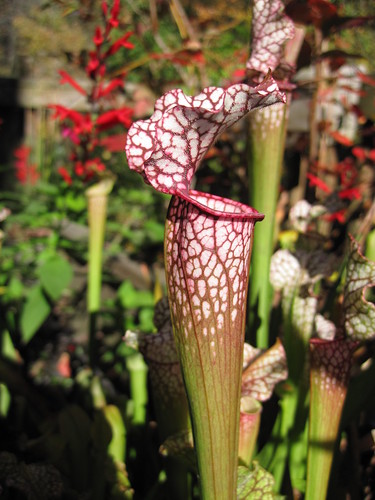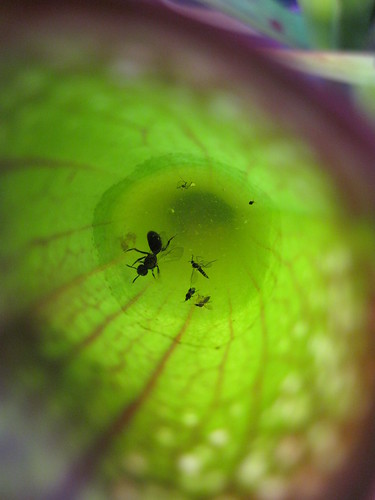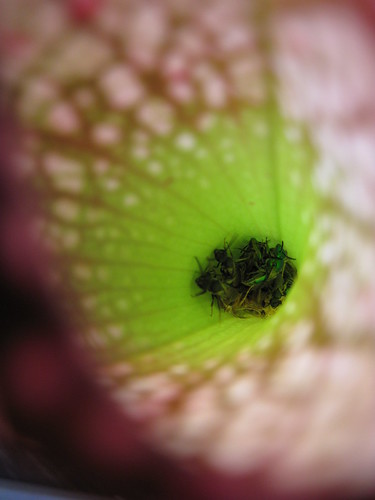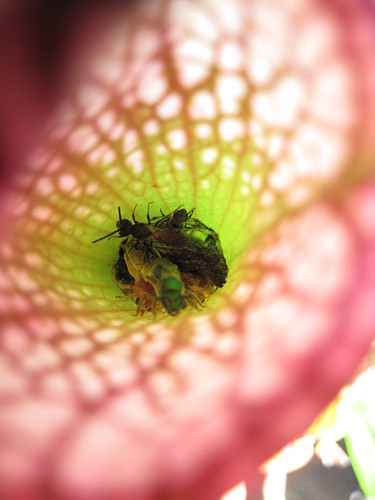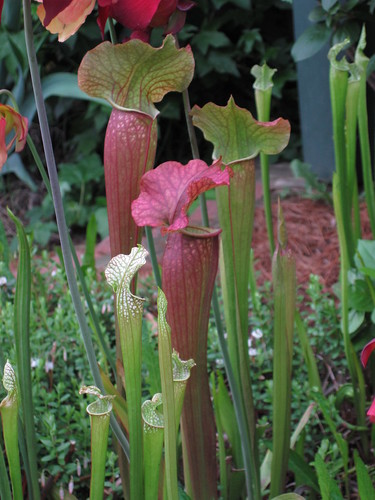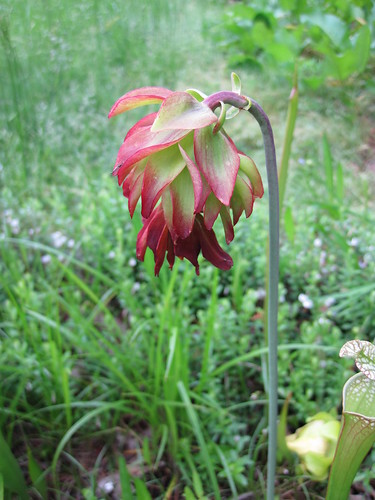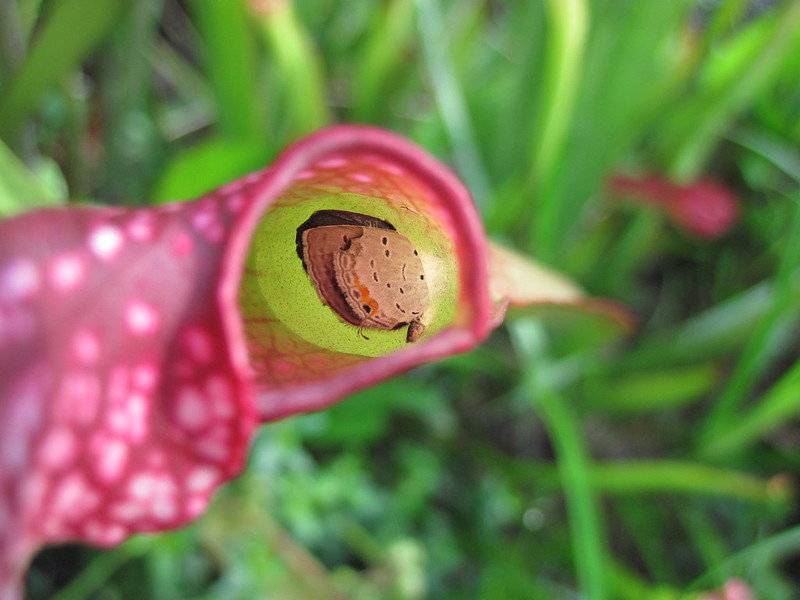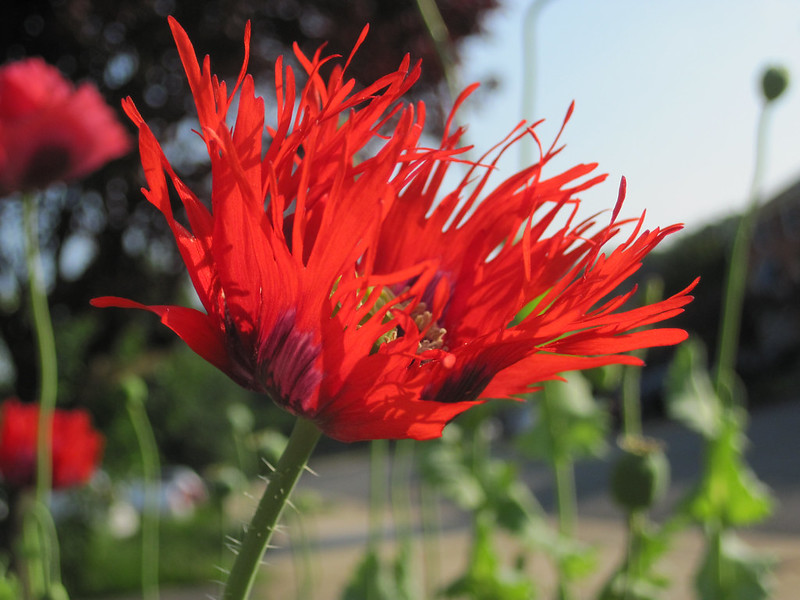Winter time rolls around and I have a handful of tropical or otherwise tender plants I have to bring in. There’s a large pineapple plant, some lemongrass, and a bunch of succulents. It helps brighten up the front room and helps me remember to water the rest of the plants.
However, because these plants are outside most of the year and, in the case of the pineapple, sitting on the ground, they can develop ants. There’s an ant species around here that LOVES pots. It smells of citronella when disturbed and very quickly moves nests from pot to pot. I’m pretty sure that it also likes to farm plant parasites because I used to have awful problems with wooly scale on my citrus whenever I got these ants in the house. Since I’ve given up on the citrus, I’ve developed a much better relationship with these ants.
How? Well, fish love to eat them. If I heavily water a pot they’re nesting in and cause them to scramble to move the nest, I can use the dust broom to sweep them up and dump them in a fish tank. Interestingly, certain species are better than others at seeing and eating ants on the water surface. Black neon tetras and angelfish are the best of the species in my house.
But the best thing about them is that they love the pitcher plants. They don’t seem to be harming them or farming anything on them, but they end up falling to their doom in the pitchers in pretty decent quantities. Last winter was the first winter I had ants and pitcher plants in the same place and it was the first year I had pitchers all winter long. The plants did MARVELOUSLY. I had one that had been struggling along finally put out more leaves. So this year I was actually pretty hopeful that the ants would come in. And they did. I now have seven functioning pitchers on one plant and two on a plant I wasn’t sure was going to make it to this year. Not bad for plants that usually dump all their pitchers in late fall.
After a few days of inantivity, the ants were back in force. This pitcher is a particular favorite. They congregate around the rim the most. There must be something there that attracts them. They seem to move around it pretty freely but there must be a spot where it gets dangerous and easy to fall because the trap is full of ant corpses.
A worker ant travels down a leaf to the pitcher. They crawl all over the plants, coming from the pineapple pot and the coffee tree. When a new pitcher opens, I move it so that it’s touching one of those plants. That seems to be the trick to getting it fed on ants.
Not sure what they were looking for around the bottom of this pitcher, but there was a bunch of them there.
I decided to seed a newly opened pitcher with some ants to build up a scent trail to it. I grabbed some that were going up another stem and set them on the lid of the pitcher. They immediately began to chew on these little clear dots on the lid. I’m guessing it’s some sort of insect bait the plant puts out. Once the dots were all gone, the ants began to wander around the pitcher and eventually back up the plant itself. Hopefully this will cause others to visit the food source and become food sources themselves.
I’m sure that some people are totally grossed out by my leaving ants in my house but I’ve a couple of reasons why it doesn’t bother me much. The biggest one is that they don’t travel far. They’re in the front of my house and I don’t see them move much further than about a third of the way towards the back. The dogs are really good about policing up any crumbs and there hasn’t really been any reason for the ants to move towards the kitchen, so far as I can tell. I also leave spiders everywhere. I figure they’re going to be way better at insect pests than I am, baring chemical death I don’t want to use because it’s extremely toxic to fish. So the spiders and I have a compact wherein I leave them in their out of the way corners and they get free ants. (as a sidenote, spiders are horrible housekeepers on a human level and the downside of this arrangement is that I have to vacuum up ant corpses they’ve tossed out of their webs pretty regularly.) There’s the other 500 words I’ve written on how they keep my pitcher plants alive. And finally, the tropical plants go back outside in March or April, depending on global warming, and take the ants with them. I’d rather do some more vacuuming in order to have my carnivorous plants be large and healthy. And hey, they’re not mosquitoes so I feel like I’m winning.

